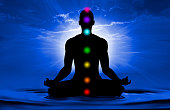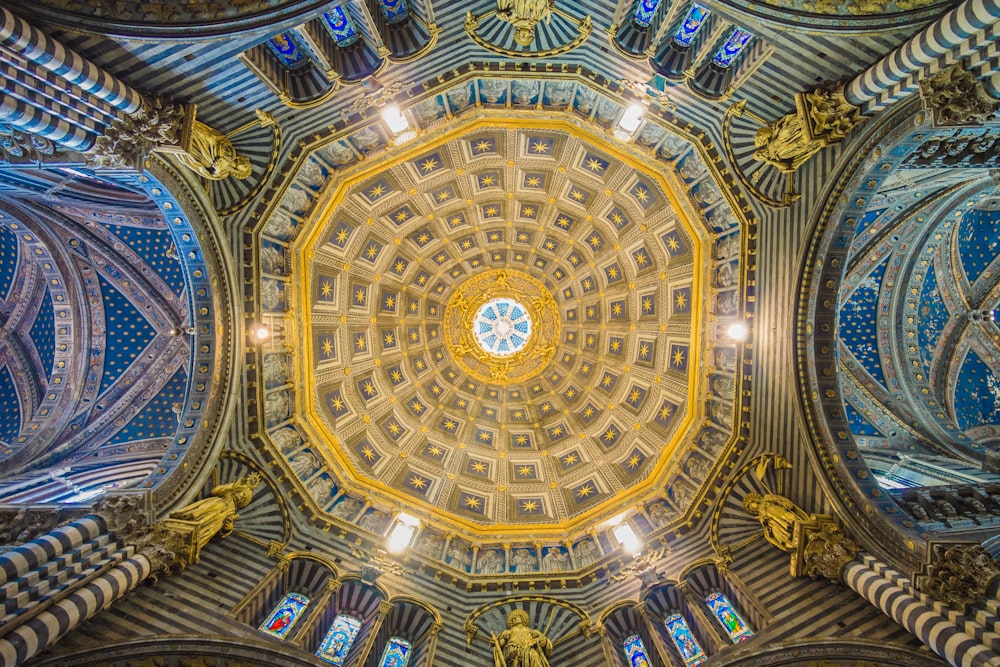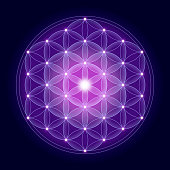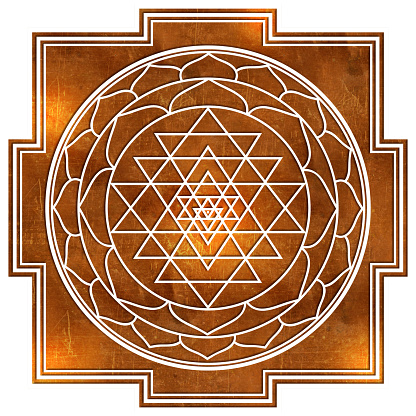
The main difference between humans and animals is that we have an erect vertebral column or the spinal cord.
There are 7 main “chakras”, each of a different colour, in our body.
These “Chakras” are located on the spinal cord in our body.
“Chakra” in the Sanskrit language means a “wheel or a circle”.

These 7 chakras have colours similar to the rainbow. And these chakras control our mind, body and soul.
The chakras are central energy sockets throughout the body, that are associated with different organs and glands, along the spinal cord.
Energy flows through these chakras to give us life energy and controls the overall functioning of the body.
Meditation, Yoga, and Colour therapy help us understand our chakras better.

The gemstones of different colours have been matched with their equivalent chakra for their believed healing properties.
Our chakras get activated or deactivated based on our emotions, inner balance and health change.
The chakra colours are dependent on our recent physical, emotional, and spiritual state.
When a person is harmonious and happy, all the 7 chakras get balanced. At this stage, the life energy flows into the 7 chakras harmoniously. Hence, we feel active and energetic when we are very happy and excited.

The “Chakra” looks like a “blooming lotus”, which is mostly circular in shape.
The “Lotus”, grows in the muddy waters, which is far away from the sun.
As the Lotus grows it reaches out into the sunlight and becomes the most beautiful flower.
It is mentioned in most of the religious texts, that the ” Lotus”, represents purity, enlightenment, self-regeneration and rebirth.

You must have seen colourful and beautiful “Mandalas” painted on the temple walls, textiles and sometimes inner ceilings of the temple.
Most mandalas are colourful and have complete geometric patterns or designs.
“Mandala” in Sanskrit means a “Circle”, that is the “chakra”.
A mandala is a geometric configuration of symbols in circles.
If you see the sun, the Moon, our Earth all are round. We see through the eyes, which have round eyeballs. All are in circles.

A traditional mandala is a circle, and the entire design is symmetrical and balanced.
If you study about our universe, everything works in symmetry. The Earth always revolves around the Sun in a particular or specific orbit and at a particular speed. The same applies to the Moon.
Everything in the universe moves in a particular symmetry hence, everything is in balance or in equilibrium.
Because of this maintained equilibrium in our nature, we feel calm and serene when we are in natural surroundings.
Mandalas are symbolic illustrations of the cosmos or the universe.

A mandala represents our “universe” – symmetric and balanced.
As the Mandala is the symbol of the cosmos or universe, they are considered religious and spiritual artwork.
If you observe the Mandala, starting from the outside circle to the inner circle of the core, it represents layers or concentric circles.

A mandala signifies the spiritual journey from “outside to inside”.
The circular designs inside the concentric circles, also symbolize that – everything around us is connected and hence life goes on.

The main central dot of the mandala is a representation or reflection “free of dimensions”.
It represents the starting point or the beginning of life. This inner main central dot signifies oneness. All creations start from a single dot which is the “divine”.
The dot is then surrounded by lines, geometrical patterns and concentric circles, as a whole representing the cyclical nature of life.
In Hinduism, Buddhism, Jainism and Shintoism, mandalas are used as spiritual and ritual symbol maps, expressing the universe.

These maps represent gods, nirvana or actual shrines, to represent the universal powers.
In numerous spiritual customs, mandalas are used as spiritual guidance tools.
These tools help the practitioners to focus during meditation and to reach trance induction. Mandala helps the practitioner establish a sanctified space.

Apart from meditation, Mandalas have many other uses. The mandala designs help eliminate annoying or irritating thoughts. This is your “creative mind” to relax and calms your body.
By creating or looking at Mandalas you can balance your mind, which in turn balances the body.

Colouring the mandala
Colouring the mandalas is used as a healing tool as it helps reduce stress and anxiety.
Colouring the mandala also helps combat depression and improves the immune system.
It also allows you to express your creative side which often we are not able to do in our daily stressful and busy lives.
By concentrating on the mandala, moving from its outer circles to its inner central dot, you are manoeuvring through the cosmic process of transforming your inner universe from one of suffering into one of joy and happiness.
You (the microcosm), by mentally “entering” the mandala and “proceeding” towards its centre, the Cosmos (macrocosm) are uniting with your main creation or divine.
This just goes to show that you are the part of the universe and the universe is a part of you.

Some common symbols within the mandala include:
Wheel:
The circular wheel is an artistic representation of the universe and implies that life goes on, there is nothing constant.

Lotus flower:
The symmetry of a lotus portrays balance.
Lotus is an underwater flower that grows into the light, human to like the lotus should reach out for spiritual awakening and enlightenment.
That is why most Hindu deities are seen seated on the lotus- enlightenment.

Sun:
Suns on the mandala represent life and energy.

Triangle:
Triangles facing upwards represent energy and action.
Triangles facing downwards represents the quest for knowledge and creativity.
When these triangles combine it forms a star, which is also a representation of the universe.

Bell:
Bells represent the opening and emptying of the mind to let wisdom and clarity enter into the mind.

Are Yantras and Mandalas Same?
A “yantra”, in the Sanskrit language, means a ‘tool’.
Yantras are part of the Tantra tools.

The yantras are used to worship the Great Mother, the Divine Feminine.
Yantras are different for different goddesses.
Some powerful yantras are said to be more than 10 to 11 thousand years old.
A yantra has a symbolic and geometric aspect and the energy of the yantra lies in its centre.
This central energy or power represents the centre of the Universe and your inner self as part of the Universe.

A yantra is made using geometric shapes and iconography images of deities.
A yantra, just like the mandala starts from the central point, the central dot. It is called the “Bindu”.
From the “Bindu”, the iconographic and geometrical shapes are created in layers.
The common geometrical shapes that are seen on the yantra are circles, hexagons triangles and lotus petals.
Yantras tend to use more geometrical shapes.
The meanings of these geometrical shapes are:

- In yantras, the triangles pointing downwards represents the divine feminine energy.
- The hexagrams signify the union of feminine and masculine energies.
- Lotus petals represent purity, clarity and transcendence.
- Circles represent the expression of life.
- The surrounding of the yantra is usually in the form of a square. The 4 corners of the square represent the cardinal directions north, south, east and west.

A yantra is a visual image, which has a sound or a mantra attached to it.
A yantra will always have a mantra associated with it.
The frequency of the mantra defines the yantra. The mantra vibration is the energy blueprint of the yantra.
The mantra attached to the yantra gives you the energy and the power for the manifestation of intention. If you worship the Deity of the yantra, the mantra on this yantra will help you achieve the desires you had manifested.

A mantra is impressed in a yantra through spiritual rituals and blessings. The power of the yantra is improved by the presence of the mantra.
Using Yantras can help a person stay focus during meditation.
The deity which the yantra portrays or is associated with protects the person worshipping.
Yantras also help us to develop our abilities, helps attract wealth, prosperity and success.

Differences Between Yantras and Mandalas
- Yantras are common in the Hindu and Buddhist tradition, whereas, Mandalas, on the other hand, are of diverse types that appear in various cultures and traditions around the world.
- Yantras are always associated with a mantra, whereas mandalas do not have a mantra attached to them. Yantras are consecrated to receive the powerful energy within the mantra.
- Mandalas are expressions of the inner self, which tries to connect and balances itself with the world. As they are expressions, Mandalas are represented differently by different people. Hence, mandalas are more artistic and can have different colours, shapes, and layers. But, yantras follow a proper format of symbolism. Only three colours-white, black and red are used to create the yantras.
- Mandalas can be of any size, as it’s your expression. Yantras, on the other hand, are small in size and has a definite shape and structure.
- You will see that the Yantras are mostly created on flat surfaces or are in 3D shapes, whereas, Mandalas can be made of different colours and materials and on different surfaces.
- Yantras have the powers of the mantra and divine feminine energy. Hence, yantras are used to get something, whereas, Mandalas help in bringing about balance and connection in the creator or the observer.
Mandalas and yantras have similarities, but they also differ significantly in their intention and meaning.

Mandala Activity For You !
Step 1
Select a simple mandala from the internet that strongly appeals to you.
Step 2
Focus on the intention that you want to bring into your life and gently gaze at the beautiful mandala.
Step 3
Simply bring back your focus to the beauty of the mandala if your mind has started thinking about daily stresses. The beauty of the mandala should engage all your attention.
Concentrate the designs and colours in the mandala.
Step 4
Gradually you will start feeling relaxed and a feeling of lightness may arise.
Step 5
The first time you meditate or concentrate on the mandala – do it for 5 minutes.
Gradually you can start meditating/concentrating on the mandala for 15 minutes.
Some of the Mandalas made by me



Discover more from Dreamz&Experiences
Subscribe to get the latest posts to your email.


I will try to paint mandalas. Somehow not so impressed with Yantras may be it has more of a religious angle….its my perspective though
Please try and draw mandalas and do share your mandala experiences
[…] What Does A Mandala Mean To You? […]
[…] What Does A Mandala Mean To You? […]
[…] What Does A Mandala Mean To You? […]
[…] What Does A Mandala Mean To You? […]